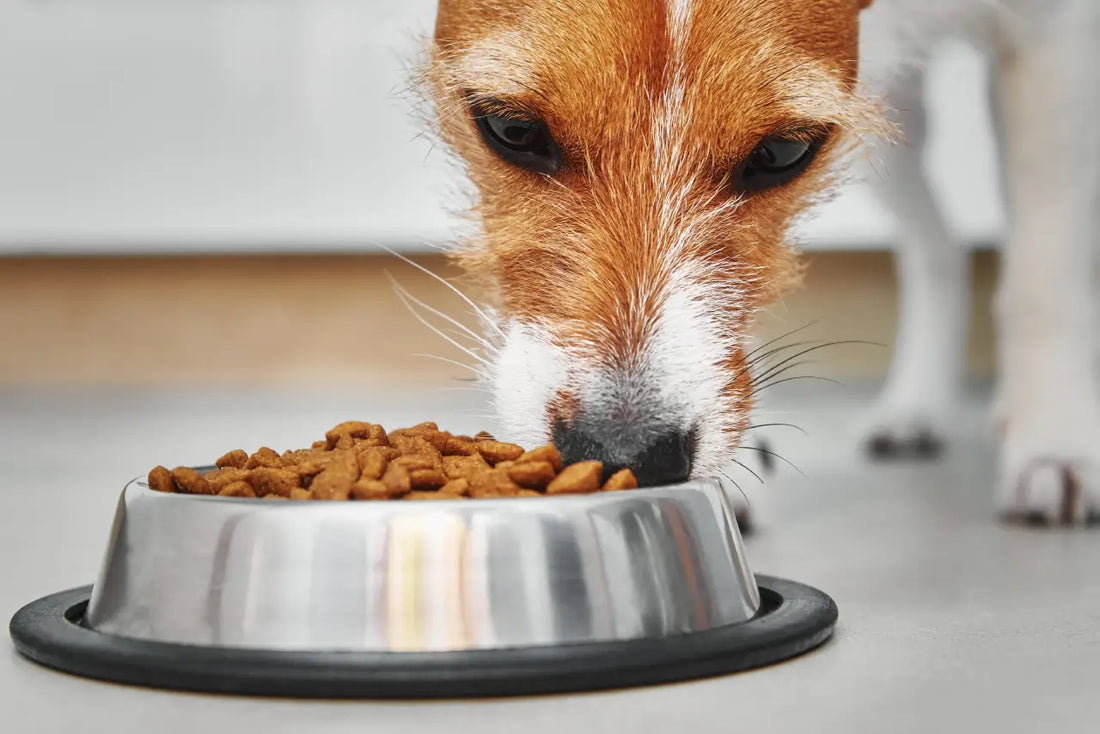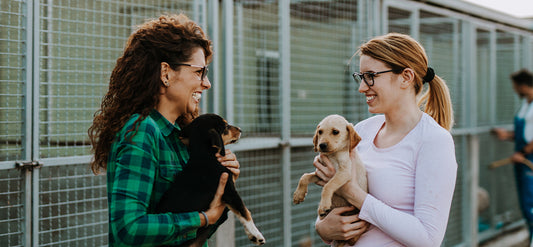“Variety is the spice of life,” said no dog ever. At least not when it comes to food. In fact, constantly changing up the dinner menu is likely to result in a digestive upset. Still, there are times when a new food is necessary. Just not all at once.
Whether your doggy has developed a dietary allergy or is transitioning to a new stage of life, we’ll show you how to gradually – and safely – transition their food, too.
Reasons to Switch Your Dog's Food
Just because there’s a sale on kibble, doesn’t mean you should switch. Without making a gradual change, doing so is likely to disrupt your doggie’s digestion causing vomiting or diarrhea.
Wondering why? In short, all different brands, including our own dog foods, have different ingredients in varying amounts. Some proteins contain higher fat content that can throw off their internal balance. Couple that with inconsistent fiber counts and your dog’s entire healthy bacteria colony may struggle to keep up with all the change.
However, in some cases, transitioning to a new dog food is absolutely the right call. For instance, it’s not uncommon for pets to develop food allergies over time. Many dogs become grain or gluten intolerant even after they’ve been eating a certain brand for many years.
If you’re seeing lesions, rashes, and itchy skin patches that are hot to the touch, it could be an allergen attempting escape through the largest organ in your dog’s body: the skin. Time to test out a grain-free dog food and give their system a break.
Some pet parents may choose to switch out their dog’s food after adopting from a rescue. Make sure the foster parent gives you some of the old food and speak with your vet or pet food professional about high-quality dog food that might be appropriate for their age.
New life stages also come with new dietary needs. Whether they’re exiting the puppy phase or graduating to senior sweetie, your dog may need more concentrated nutrients to help with the transition. Just make sure you get the go-ahead from your vet before making any decisions.
Gradually Transitioning to a New Dog Food
Once you and your vet have decided on the new provisions, you’ll need to slowly make the switch over about 7-10 days, keeping the total amounts consistent to avoid under or over feeling.
Start by measuring out about a 1/4th of the old food. Replace what you took out with the new food and make careful note of your pup’s reaction. If you notice loose stool, add in even less food for the next few days. Discontinue the new food if you see allergic reactions or vomiting. Do this for about 3 days.
After about day 3, assuming all is going well, start mixing half their old food with half their new food, keeping an eye out for any adverse or unusual reactions.
For the last 3-4 days, you’ll want to have mostly new food mixed with about a 1/4th of the old food. If you don’t notice anything out of the ordinary you should be safe to start feeding the new dog food by itself.
If you have to make a quick switch to a new dog food after a surgery or severe reaction, begin by feeding the new food in smaller portions throughout the day. Try to mirror the formula of the old food as closely as possible (save for the allergen if you know it). If after about 48 hours your pup seems to be tolerating the switch, you can work back up to your regular feeding schedule.
Truth is, unlike humans, dogs don’t require variety in their food. In some ways, their systems are less sensitive than humans, except when it comes to change. For that, gradual is the name of the game. No need to be anxious about the process though. Making a safe transition to a new dog food doesn’t require much more than some time, patience, and a little love.



